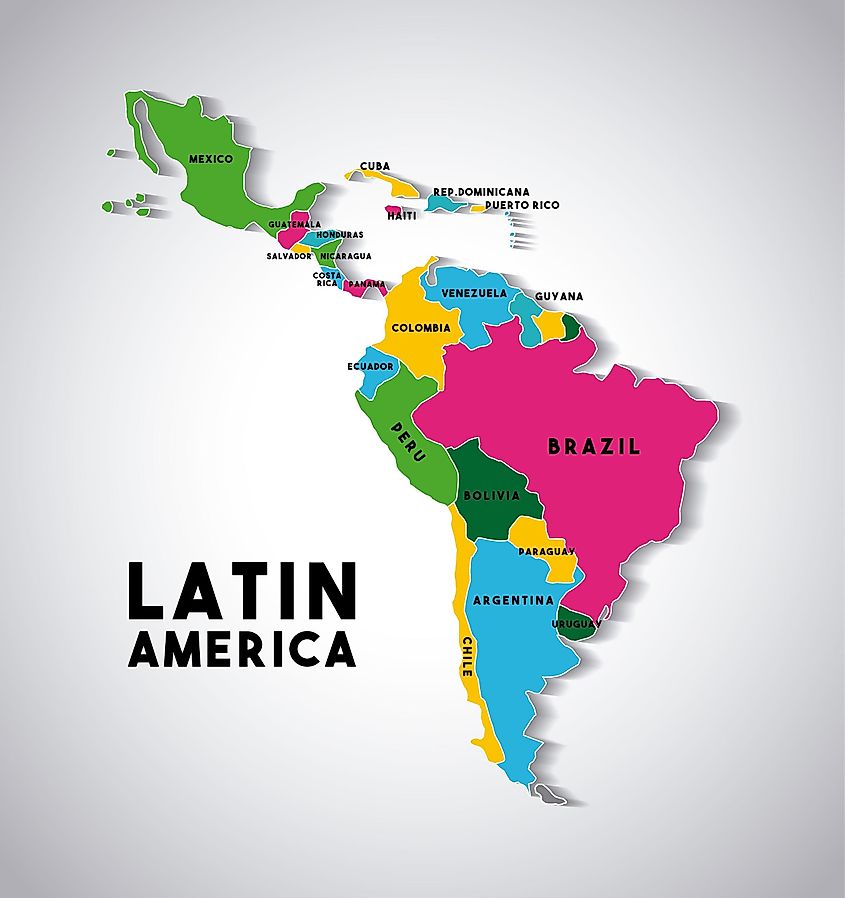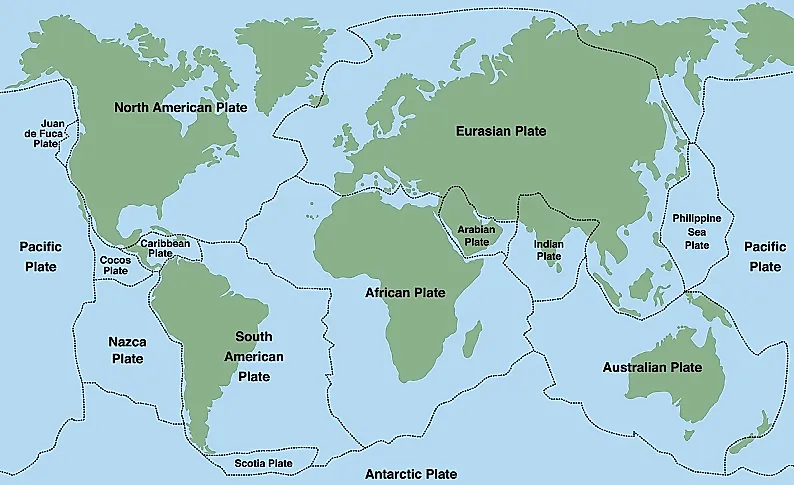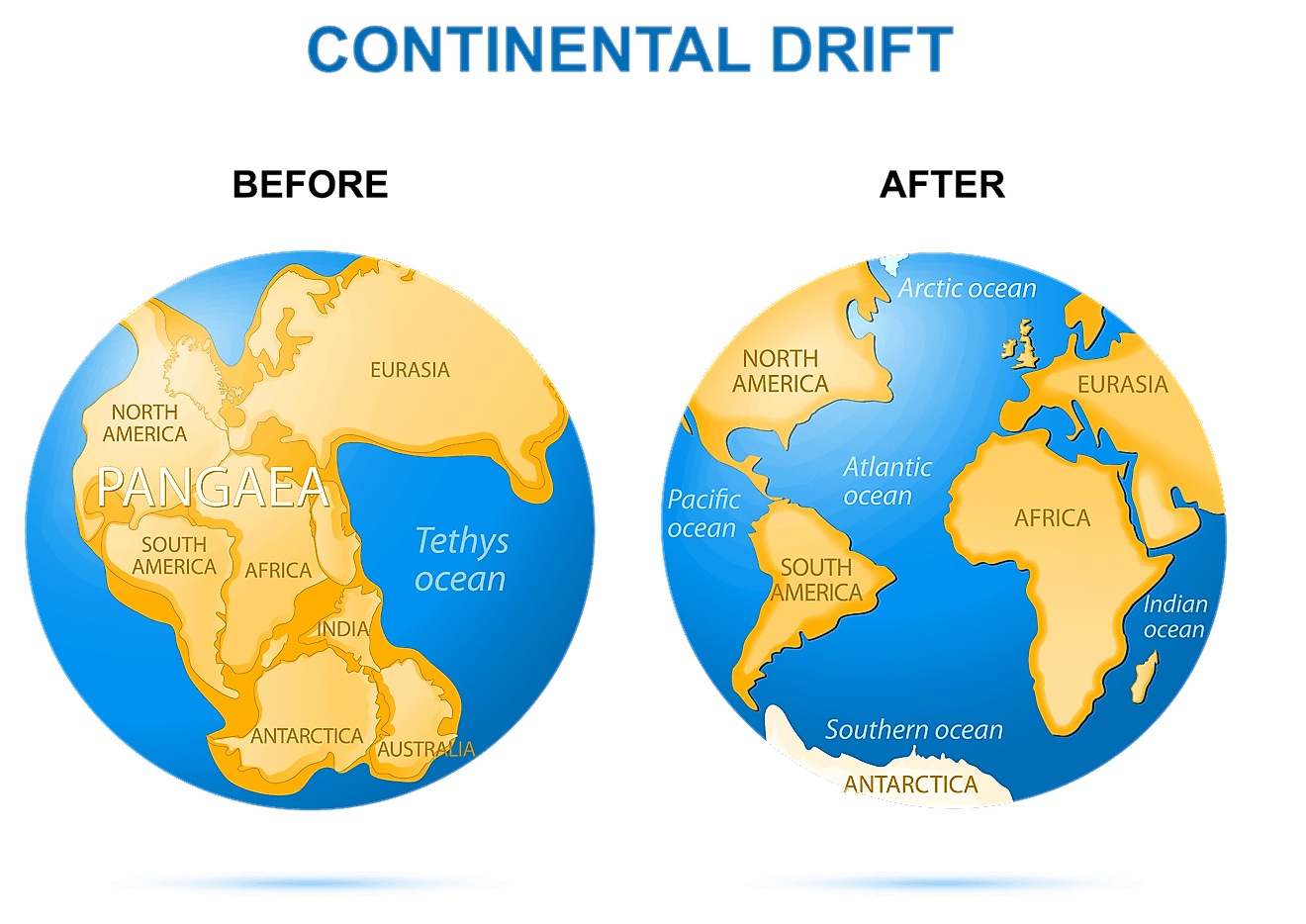Latin America

- Latin America is a vast, intercontinental region stretching from the US-Mexico border to the southern tip of South America.
- About 659 million people live in Latin America.
- The term "Latin America" originally referred to any territory in the Western Hemisphere where a Romance-based language was the predominant language.
- Latin culture and people known as Latinos or Latinas usually implies descent from a Spanish or Portuguese-speaking country of Latin America.
Latin America is a vast region in the Western Hemisphere that encompasses Mexico, Central America, the Caribbean, and South America. Thus, it traverses two continents and includes hundreds of millions of people, about 659 million in total. Latin America is often confused with other terms, such as Ibero-America and Hispanic America. The former term refers to countries in which Spanish or Portuguese are the predominant languages, while the latter refers only to countries where Spanish is the predominant language.

Latin America today, however, refers to all the territory stretching from the U.S.-Mexico border all the way to the southern tip of South America. The term “Latin America” was originally created to denote countries in which any Romance, Latin-based languages, including Spanish, Portuguese, and French, are the most prevalent languages. Today, however, the term now denotes the entire aforementioned region, regardless of the language spoken. Sometimes, Latin America is referred to as Latin America and the Caribbean to indicate that it includes the Caribbean.
Contents:
- Where Did The Term “Latin America” Come From?
- The Geopolitical Concept Of Latin America
- The Cultural Concept Of Latin America
- The Concept Of “Latinos/Latinas”
Where Did The Term “Latin America” Come From?
The term “Latin America” is a legacy of colonialism. At the time when European powers were seizing land in the Americas to establish colonies, they began using the term “Latin America” to differentiate the places in which Romance, Latin-based languages like Spanish, Portuguese, and French were spoken from places where non-Romance languages like English and German were spoken. The term “Latin America” was first put in writing in the 19th century, during a conference in Paris, France, held by a Chilean politician named Francisco Bilbao.
There is still some disagreement as to the exact origins of the term “Latin America.” A historian named John Leddy Phelan has argued that the term was originally used as a rallying cry for the people of Central and South America in their fight against imperialism. Ironically, however, Napoleon III used the term “Latin America” when he was attempting to make his own imperial conquests, as he wanted to take over Mexico in the 1860s.
The Geopolitical Concept Of Latin America
In geopolitical terms, Latin America has lost some of its meaning in regards to separating countries where Romance languages are spoken from the rest of the countries in the Western Hemisphere. Indeed, when people refer to Latin America today, they do not exclude countries in the region in which the predominant language is not a Romance-based language. There are several countries and dependencies in what is called Latin America today, in which non-Romance languages are dominant.

These include the Central American country of Belize, the South American countries of Guyana and Suriname, and several countries and dependencies in the Caribbean. Thus, the term “Latin America” today has mostly geopolitical connotations rather than linguistic. Moreover, some say that if the term “Latin America” was meant to apply to all places in which a Romance language dominates, it could easily be argued that the French-speaking Canadian province of Quebec should be considered part of Latin America. But of course, Quebec is not a country unto itself, so it could also be argued that the term “Latin America” need not apply to it because it is in a country where English is the predominant language.
The Cultural Concept Of Latin America
There is a difference between what Latin America means from a geopolitical point of view and what it means from a cultural point of view. Generally speaking, Latin America from a cultural perspective does apply only to countries in which a Romance-based language is the predominant language, specifically Spanish and Portuguese. For example, when people in the US or Canada refer to Latin music, they usually mean music that originates in a country of Latin America in which Spanish or Portuguese is the predominant language.

Certain styles of music and dance are ascribed to certain countries or regions of Latin America. For instance, the style of music known as salsa originated in Cuba, though over time, different styles of salsa developed, including styles that are not indigenous to the geographic region of Latin America. Indeed, there are types of salsa music that originated in the US and West Africa, which are of course not geographically part of Latin America, though the people who came up with these different styles often do come from the region.
One other characteristic of Latin American culture is that some aspects of it are not exactly Latin. In other words, there are elements of Latin American culture that do not come from Spanish or Portuguese colonial sources. Going back to the example of salsa music, in some styles of salsa, there are sounds and rhythms that are African in origin. This is because many people in Latin America are of African descent. Many are the descendants of slaves brought to Latin America from Africa by Spanish and Portuguese colonists and slave traders. Some Latin music includes traditional rhythms from the pre-Columbian Indigenous people of Latin America.
The Concept Of “Latinos/Latinas”
The people of Latin America are often referred to as Latinos or Latinas. The term “Latino/Latina” or the gender-neutral "Latinx" is usually ascribed to a person from one of Latin America’s Spanish- or Portuguese-speaking countries. People from English-, French-, or Dutch-speaking countries and territories in Latin America are usually not called Latinos/Latinas. In many cases, rather, they are referred to as Caribbean, since nearly all the non-Romance language-speaking countries and territories of Latin America are islands in the Caribbean or countries on the Caribbean coast. In the US, the term “Latino/Latina” often overlaps with the term “Hispanic”, which is a term that specifically implies people from countries in which Spanish is the predominant language. Thus, a person from Brazil may or may not be called a Latino/Latina in the US.

The term “Latino/Latina” can also have racial connotations. For example, in the US, a Black person who comes from Latin America will often be considered an African-American rather than a Latino/Latina, even if their first language is Spanish or Portuguese, and/or they are of Latin American descent. A person of Indigenous origin from Latin America may also not be identified by foreigners as a Latino/Latina. The term “Latino/Latina” usually refers to either people of mixed racial heritage from Latin America, or a Caucasian person from Latin America.











